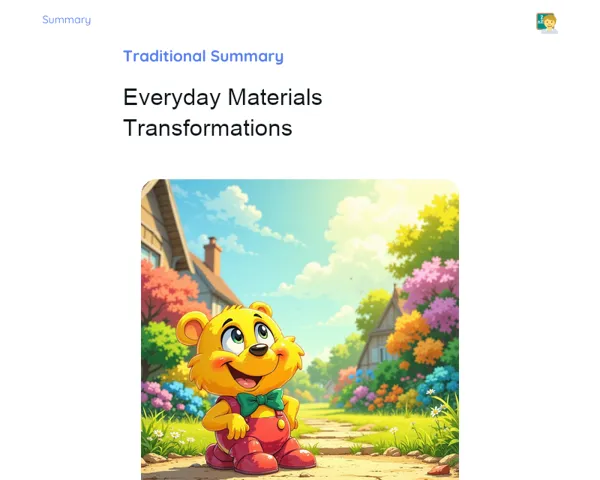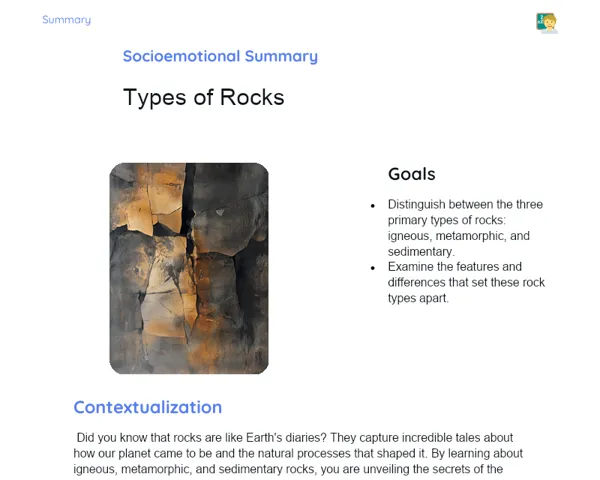Socioemotional Summary Conclusion
Goals
1. Grasp the basic structure of the atom, including the nucleus (protons and neutrons) and the electron cloud (electrons).
2. Distinguish between neutral atoms, cations, and anions.
3. Cultivate socio-emotional skills such as self-awareness and social awareness by exploring how various emotions can impact scientific learning.
Contextualization
Did you know that everything around us, including ourselves, is composed of tiny particles called atoms? These particles are so minuscule that we can't see them with our naked eye, yet they form the building blocks of all matter in the universe! By comprehending the structure of atoms, we not only delve into the chemistry and physics that govern our world, but we can also draw fascinating parallels with our own emotions and interactions. Let's embark on this intriguing journey together!
Exercising Your Knowledge
Atomic Nucleus
The atomic nucleus is the heart of an atom, comprising protons and neutrons. It is incredibly dense and contains almost all of the atom's mass. The strong nuclear force binds protons and neutrons together, overcoming the electrostatic repulsion of the positively charged protons. Understanding the nucleus is vital as it determines the element's identity. Just like the nucleus of an atom holds everything together, our core emotions greatly influence our behavior and interactions with the world around us.
-
Protons: Positively charged particles found in the nucleus. The number of protons defines the chemical element (for instance, hydrogen has 1 proton).
-
Neutrons: Neutral particles located in the nucleus. They, along with protons, contribute to the atom's overall mass.
-
Strong Nuclear Force: The force that keeps protons and neutrons together. Although protons tend to repel each other due to their positive charges, this force is sufficiently strong to hold them together.
Electron Cloud
The electron cloud surrounds the nucleus, where electrons reside. Electrons are significantly smaller than protons and neutrons and carry a negative charge. They exist in different energy levels or shells, and their arrangement within these shells impacts the atom's chemical properties. Just as electrons orbit the nucleus, our emotions and thoughts are influenced by our core experiences, affecting how we view and respond to the world.
-
Electrons: Negatively charged particles that orbit the nucleus. They play a key role in forming chemical bonds with other atoms.
-
Energy Levels: Electrons exist in various layers around the nucleus. These layers carry different energy levels, with electrons in outer layers having higher energy.
-
Chemical Interactions: The arrangement of electrons in the shells determines how the atom interacts with other atoms to form molecules and compounds.
Neutral Atoms, Cations, and Anions
Atoms can exist in three different states: neutral, cation, or anion. A neutral atom has an equal number of protons and electrons, leading to no overall charge. When an atom loses electrons, it becomes a cation (positively charged), while gaining electrons turns it into an anion (negatively charged). Understanding these states helps us better comprehend how atoms interact to form compounds. Just like atoms can gain or lose electrons and alter their charge, our personal experiences can shift our emotional states and influence our behavior.
-
Neutral Atom: Has an equal number of protons and electrons, resulting in no net charge.
-
Cation: An atom that has lost one or more electrons, leading to a positive charge due to an excess of protons.
-
Anion: An atom that has gained one or more electrons, resulting in a negative charge due to an excess of electrons.
Key Terms
-
Protons: Positively charged particles found in the nucleus of the atom.
-
Neutrons: Neutral particles located in the nucleus of the atom.
-
Electrons: Negatively charged particles that orbit the nucleus.
-
Energy Level: Different shells where electrons move around the nucleus.
-
Cation: An atom that has lost electrons, acquiring a positive charge.
-
Anion: An atom that has gained electrons, acquiring a negative charge.
-
Strong Nuclear Force: The force that holds protons and neutrons together in the nucleus.
For Reflection
-
How can you relate the structure of the atom to how you manage and balance your emotions?
-
In what ways can understanding cations and anions help you comprehend your emotional reactions in various situations?
-
Recall a moment when you felt overwhelmed. How might emotional regulation strategies have aided you in finding your emotional equilibrium?
Important Conclusions
-
The atom is the fundamental unit of matter, consisting of a nucleus (protons and neutrons) and an electron cloud (electrons).
-
The structure of the atom enables us to differentiate between neutral atoms, cations (atoms with a positive charge), and anions (atoms with a negative charge).
-
Comprehending atomic structure extends beyond chemistry; the behavior of atoms serves as an analogy for our own emotions and social interactions.
Impacts on Society
Understanding atomic structure has a significant impact on many aspects of our daily lives. For instance, the electricity we use daily stems from electron movement. Whenever we switch on a light bulb, charge our phones, or use a computer, we are leveraging the basic principles of atoms and their interactions. Moreover, atomic structure is crucial for modern medicine; treatments such as radiation therapy for cancer rely on meticulous knowledge of matter at the atomic level.
On an emotional and social note, realizing that we are composed of atoms can provide us with a broader perspective on the interconnectedness of all things. Just as atoms bond to create molecules, our actions and emotions are interlinked with those around us. Acknowledging this interconnectedness fosters empathy and enhances our social skills, essential for harmonious living and collaboration.
Dealing with Emotions
To manage your emotions while studying the topic of atoms, I recommend you follow the RULER method: First, Recognize your feelings while studying by asking yourself, 'How am I feeling right now?'. Then, Understand the reasons behind your emotions; maybe the subject feels challenging or you’re fatigued. Next, Label your feelings accurately, for instance, 'I'm frustrated because I struggled with this concept'. Express your emotions in a constructive manner, such as discussing your difficulties with a classmate or teacher. Finally, practice techniques to Regulate your feelings, like taking frequent short breaks and deep breathing to maintain balance and productivity during your studies.
Study Tips
-
Create Diagrams and Models: Visualize atomic structure by crafting diagrams and 3D models using simple materials like thermocol balls and toothpicks. This will solidify your understanding of the atom's components.
-
Use Online Resources: There are plenty of animated videos and interactive simulators that elucidate atomic structure in a fun and engaging way. Utilize these resources to enhance your learning.
-
Study Groups: Join study groups with your peers. Teaching concepts to others is an excellent way to reinforce your own understanding and strengthen your social skills.



